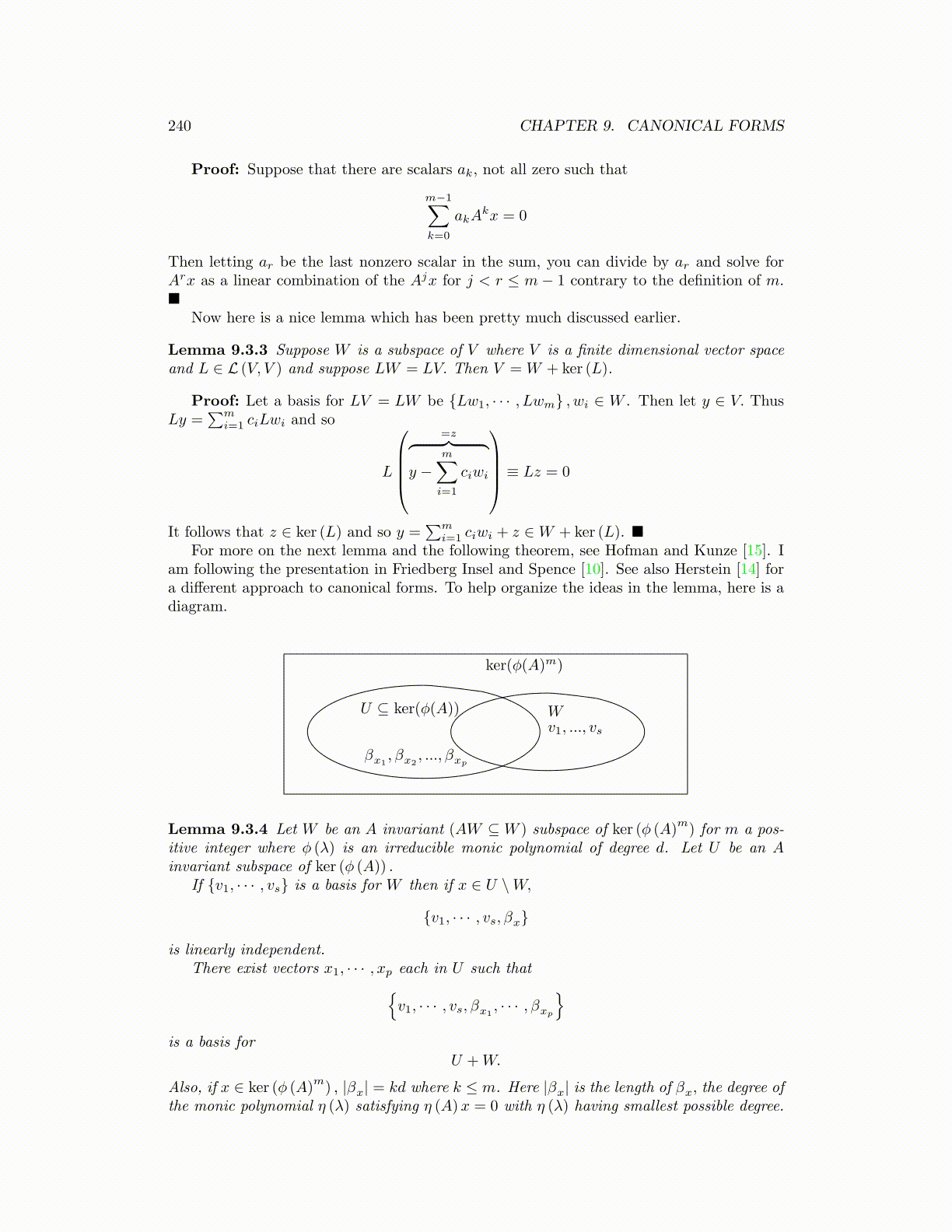
240 CHAPTER 9. CANONICAL FORMS
Proof: Suppose that there are scalars ak, not all zero such that
m−1∑k=0
akAkx = 0
Then letting ar be the last nonzero scalar in the sum, you can divide by ar and solve forArx as a linear combination of the Ajx for j < r ≤ m − 1 contrary to the definition of m.■
Now here is a nice lemma which has been pretty much discussed earlier.
Lemma 9.3.3 Suppose W is a subspace of V where V is a finite dimensional vector spaceand L ∈ L (V, V ) and suppose LW = LV. Then V =W + ker (L).
Proof: Let a basis for LV = LW be {Lw1, · · · , Lwm} , wi ∈ W . Then let y ∈ V. ThusLy =
∑mi=1 ciLwi and so
L
=z︷ ︸︸ ︷
y −m∑i=1
ciwi
≡ Lz = 0
It follows that z ∈ ker (L) and so y =∑m
i=1 ciwi + z ∈W + ker (L). ■For more on the next lemma and the following theorem, see Hofman and Kunze [15]. I
am following the presentation in Friedberg Insel and Spence [10]. See also Herstein [14] fora different approach to canonical forms. To help organize the ideas in the lemma, here is adiagram.
ker(ϕ(A)m)
Wv1, ..., vs
U ⊆ ker(ϕ(A))
βx1, βx2
, ..., βxp
Lemma 9.3.4 Let W be an A invariant (AW ⊆W ) subspace of ker (ϕ (A)m) for m a pos-
itive integer where ϕ (λ) is an irreducible monic polynomial of degree d. Let U be an Ainvariant subspace of ker (ϕ (A)) .
If {v1, · · · , vs} is a basis for W then if x ∈ U \W,
{v1, · · · , vs, βx}
is linearly independent.There exist vectors x1, · · · , xp each in U such that{
v1, · · · , vs, βx1, · · · , βxp
}is a basis for
U +W.
Also, if x ∈ ker (ϕ (A)m) , |βx| = kd where k ≤ m. Here |βx| is the length of βx, the degree of
the monic polynomial η (λ) satisfying η (A)x = 0 with η (λ) having smallest possible degree.